The history of Rome is a fascinating blend of philosophy, military might, architectural innovation, infrastructure development, and legal evolution.
Philosophy: The Rise of Stoicism
One of the most influential philosophical schools that emerged during this period was Stoicism, which originated in ancient Greece but found a fertile ground in Roman culture. Founded by Zeno of Citium around 300 BCE, Stoicism emphasized living in harmony with nature, using reason, and practicing virtue as paths to achieving eudaimonia or human flourishing. These ideas significantly influenced the thoughts and actions of important Roman thinkers throughout the empire.
Military Might: The Power of the Roman Army
The Roman Army also played a crucial role in shaping the empire. Known for its military power, the army’s structure, strategies, and operational effectiveness were key in achieving victories across vast territories. This military might not only helped in expanding the empire but also in maintaining its dominance.
Architectural Innovation: Masterpieces of Ancient Engineering
Architecturally, the Romans were not just builders; they were innovators who transformed the architectural landscape of their time. Their structures were functional yet served as a testament to their power and cultural identity.
Infrastructure Development: The Backbone of an Empire
Infrastructure-wise, Roman roads played a significant role in maintaining and expanding the empire. These roads facilitated trade, military movement, and communication across vast distances, thereby strengthening the empire’s cohesion.
Legal Evolution: The Foundation of Modern Legal Systems
Lastly, Roman Law has left a lasting legacy on modern legal systems. Originating around 753 BCE and lasting until the 5th century CE, its principles are still relevant today. Understanding this legacy is essential for grasping the foundations of contemporary laws.
The rise of Stoicism, the power of the Roman army, architectural innovations, development of road infrastructure, and the establishment of Roman law collectively shaped not only the Roman Empire but also laid down foundational elements that continue to influence modern society.
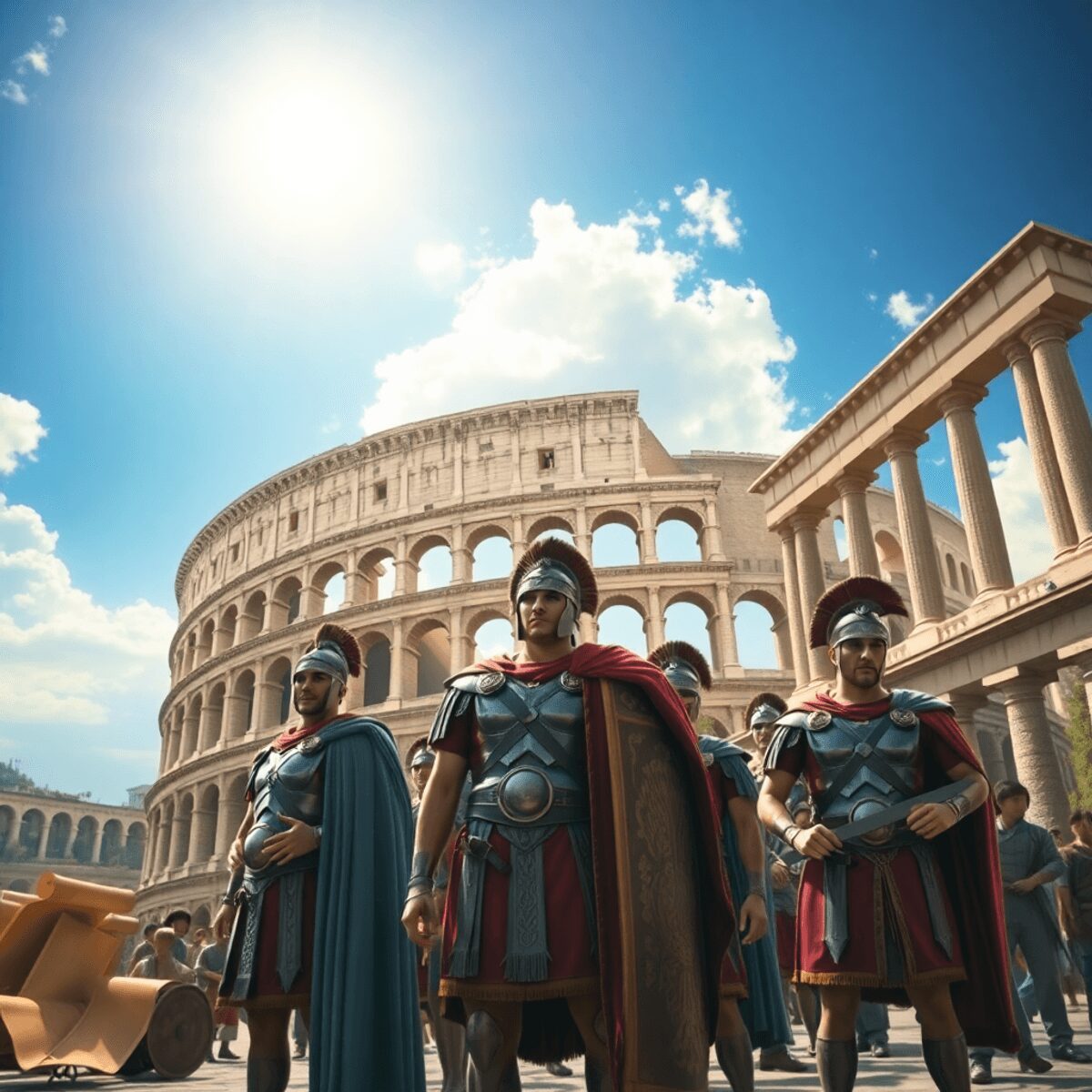
Crime Rates and Common Offenses in Imperial Rome
Imperial Rome’s urban environment was a bustling maze of crowded streets, narrow alleys, and densely packed neighborhoods. This setting contributed heavily to the city’s high crime rates. Common offenses ranged from petty theft and burglary to violent crimes such as assault and murder. Pickpocketing thrived in busy marketplaces, while armed robbery posed a significant threat in less patrolled areas.
Key common crimes included:
- Theft and pickpocketing: Frequent in crowded public spaces.
- Assault and homicide: Often linked to disputes or gang violence.
- Vandalism and property damage: Reflecting social unrest or personal vendettas.
- Fraud and forgery: Targeting financial transactions within the empire.
Law enforcement faced numerous challenges in this environment. The sprawling city layout, with its dark side streets and poorly lit quarters, created ideal conditions for criminals to evade capture. The sheer population density complicated surveillance efforts, especially at night when many crimes occurred. Limited resources meant that policing focused mainly on major offenses, leaving many smaller infractions underreported or ignored.
The difficulty of maintaining order in such a vibrant yet chaotic urban center underscored the importance of specialized forces like the Vigiles. Their role as night watchmen became crucial in deterring crime during hours when traditional patrols were less effective.
Amidst this backdrop of crime and disorder, life for the plebeians, who represented the majority of the population, was often challenging. However, their experiences and struggles played a significant role in shaping the socio-economic landscape of ancient Rome.
Despite these challenges, Imperial Rome was also a place of incredible entertainment with gladiatorial games, chariot races, and theatrical performances being popular among its citizens. These spectacles were not just mere entertainment; they had profound effects on social relationships and political authority.
Furthermore, understanding the crime rates and common offenses during this period helps us appreciate the complex legacy that Ancient Rome has left behind. From its inception as a small city-state to its transformation into a vast empire, Rome’s influence is both profound and enduring. The impact of Roman culture, governance, and innovations can be seen in various aspects of modern society.
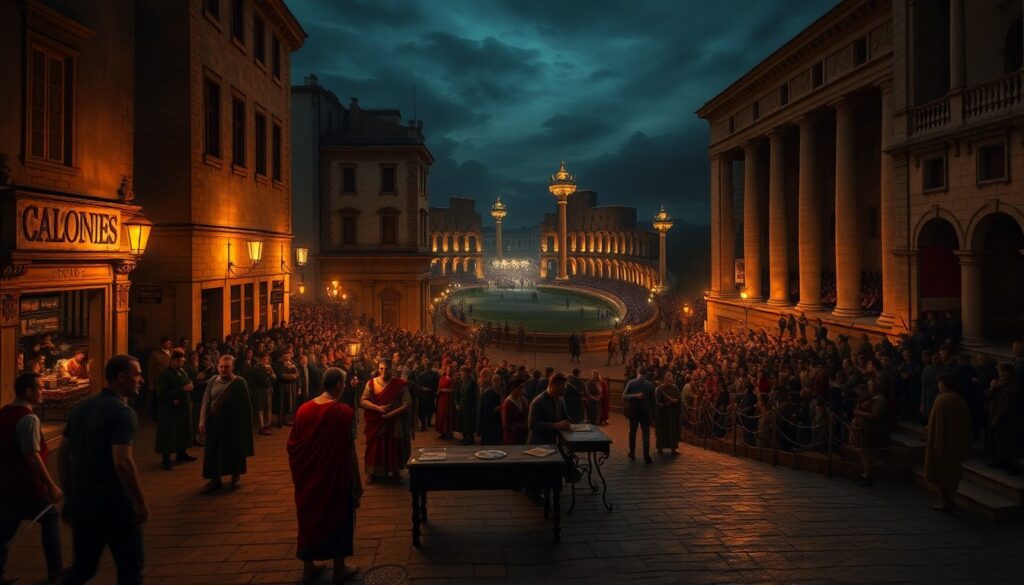
Exploring the intricacies of Ancient Rome reveals not only a tale of conquest and expansion but also one of innovation, culture, and governance that has left an indelible mark on the world.
In addition to his academic pursuits, JP enjoys immersing himself in role-playing games, especially in Second Life.
The ancient Roman civilization, with its rich history and profound influence on modern society, is a subject of great interest. A significant milestone in the development of Roman law and legal history was marked by the creation of the Twelve Tables between 451-450 BCE. These laws were the first attempt to codify the complex and often arbitrary legal practices of ancient Rome.
The governance of the Roman Republic, which existed from 509 to 27 BCE, represented a significant transition from monarchy to a complex political structure. This period laid the foundation for modern democracies and established key principles of governance that resonate today, as explored in our article about the structure of power in the Roman Republic.
Moreover, the religious practices of the Romans were not merely a set of beliefs but a comprehensive system that intertwined with every aspect of their lives. From the early days of the Roman Republic to the expansive reach of the Empire, religion served as a cornerstone of Roman identity, influencing politics, culture, and social structures. This intricate relationship between religion and daily life is further examined in our piece on Exploring the Ancient Roman Religion.
Speaking of societal structures, it’s important to note that women in ancient Rome had a unique legal status that reflected a complex interplay of rights and restrictions. Their citizenship was intrinsically linked to their relationships with men, such as fathers or husbands. For an in-depth understanding of this topic, we recommend reading our article on the legal status of Roman women: rights and restrictions.
Lastly, no discussion about ancient Rome would be complete without mentioning its remarkable artistic expressions. The period marked by ancient Roman art is characterized by creativity that thrived from 753 BC to 476 AD. This artistic phase was heavily influenced by earlier Greek and Etruscan traditions. To delve deeper into this subject, our article on Art and Culture in Ancient Rome provides an insightful journey through sculpture and mosaics that defined this era.
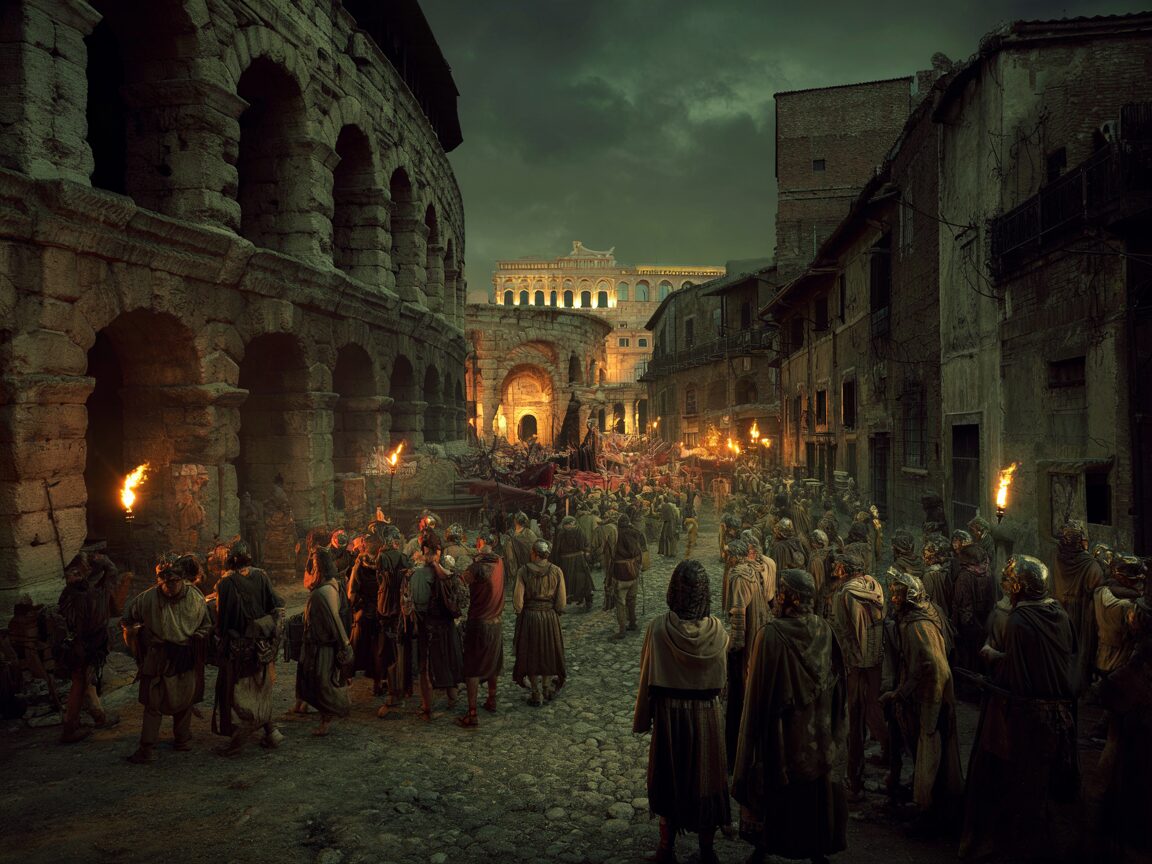
Social Status Matters: Varied Punishments in Imperial Rome
The Roman legal system was closely connected to the social hierarchy that defined everyday life. Punishments varied dramatically depending on whether the offender was a citizen, slave, or non-citizen, reflecting rigid distinctions in legal rights and personal dignity.
Citizens vs. Slaves: A Study of Differential Treatment
Roman citizens enjoyed legal protections that slaves and non-citizens could only dream of. The law recognized the inherent dignity of citizens, which translated into less brutal and more regulated forms of punishment. For example:
- Corporal punishment was generally forbidden for citizens except in extreme cases such as treason.
- Citizens accused of crimes often faced fines, exile, or loss of privileges rather than physical torture.
- Trials for citizens were formalized, allowing opportunities for defense and appeals.
In stark contrast, slaves carried no such protections. They were considered property rather than persons under the law, making them vulnerable to harsh treatment:
- Slaves could be subjected to torture without restriction to extract confessions or punish disobedience.
- Common offenses by slaves often resulted in whippings or branding.
- Severe crimes might lead to execution methods like crucifixion, reserved almost exclusively for non-citizens and slaves.
Non-citizens occupied an intermediate position. While not as vulnerable as slaves, they lacked full legal rights and could be punished more severely than citizens for comparable offenses.
This differential treatment underscored the importance of social status in Roman justice. It was not just about maintaining order but affirming societal roles through the application of law. The state’s approach sent a clear message: citizenship conferred privileges that protected your body and reputation; without it, you faced harsher realities.
Legal disparities extended beyond punishment severity into procedural aspects. For instance:
- Only citizens had access to public trials with advocates.
- Slaves’ testimonies were often discounted unless extracted under torture.
- Punishments served both as penalties and social markers reinforcing class divisions.
The emphasis on social status shaped every interaction with the justice system, revealing a society where law enforcement was inseparable from social control mechanisms. Understanding these distinctions helps explain why crime and punishment in Imperial Rome cannot be viewed outside its hierarchical context.
Unique Punishments That Shocked Society
Imperial Rome’s legal system enforced punishments that varied drastically based on social status and the nature of the crime. Some penalties were so severe and bizarre they left a lasting impression on society.
1. Poena cullei
A punishment specifically for parricide—the act of killing one’s own parent. The condemned was sewn into a leather sack along with a snake, dog, monkey, and rooster, then drowned. This gruesome method symbolized the extreme social taboo against such crimes.
2. Damnatio ad bestias
A public spectacle where criminals, often slaves or non-citizens, were thrown to wild beasts in the arena. This form of execution served both as punishment and brutal entertainment.
Other unique punishments included forced public humiliation or wearing distinctive marks to identify offenders, reinforcing social control through shame. The stark contrast in punishments between citizens and slaves highlights how deeply law intertwined with status in Imperial Rome’s streets.
This variety of harsh and symbolic penalties shaped perceptions of justice during this era of Crime and Punishment on the Streets of Imperial Rome.
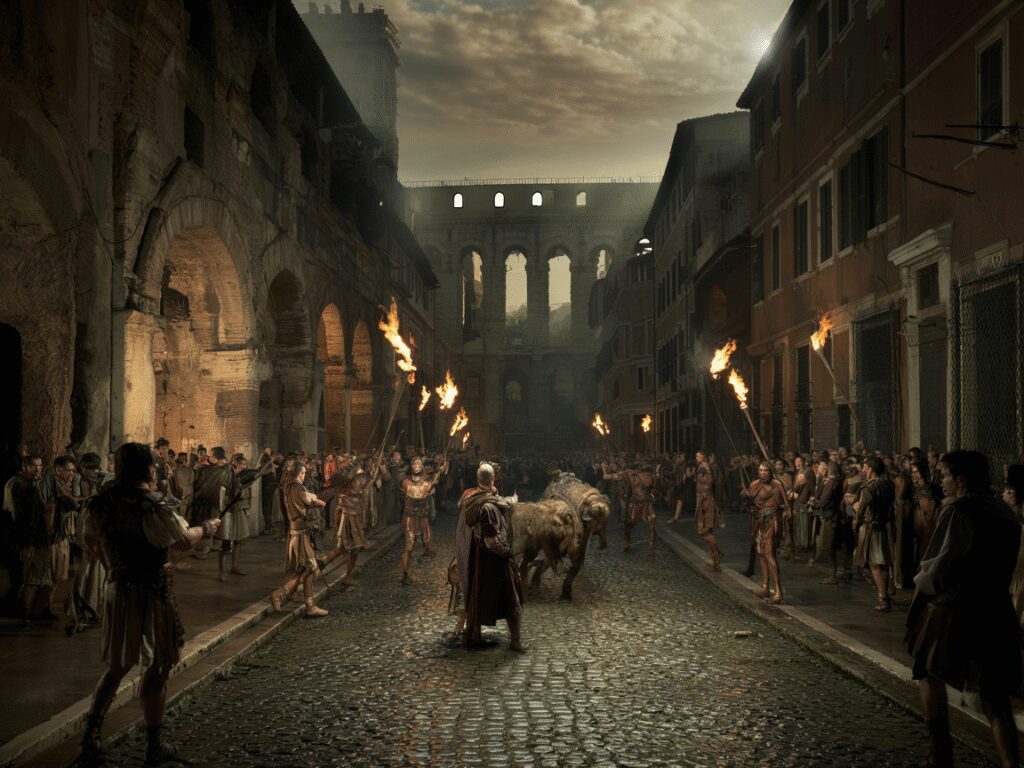
The Dark Side: Imprisonment, Torture, and Social Hierarchy in Roman Justice System
Prisons as Holding Cells: The Functionality Behind Bars
Imprisonment in Imperial Rome served a very different purpose compared to modern penal systems. Prisons were rarely used as places for long-term confinement or rehabilitation. Instead, they functioned primarily as holding cells for accused persons awaiting trial or execution.
Roman prisons were often overcrowded and harsh environments. Conditions were grim, with minimal provisions for hygiene, food, or comfort. The most infamous prison was the Carcer on Capitoline Hill, originally designed to hold political prisoners and serious offenders temporarily. Many accused spent weeks or months here before their cases reached court.
The concept of incarceration as punishment was not widespread. Roman society emphasized swift justice through trials and punishments rather than lengthy detention. This approach reflected the system’s reliance on public spectacle and corporal punishments instead of imprisonment.
Prisons also played a role in the enforcement of social hierarchy within the legal process:
- Citizens could sometimes avoid harsh pre-trial imprisonment or receive better treatment while detained.
- Slaves and non-citizens faced much harsher conditions, often subjected to torture during interrogation to extract confessions or information.
- Torture was officially banned for Roman citizens except in cases involving treason (maiestas), but widely used against lower classes.
The use of torture highlights another dark aspect of Roman justice. It was a tool wielded largely by those with power over marginalized groups—especially slaves who lacked any legal protections. Torture methods included scourging, branding, and even physical mutilation depending on the crime and status of the accused.
The social order permeated every stage of the legal process—from accusation to punishment—reinforcing class distinctions deeply embedded in Roman society. Those at the top often avoided severe penalties, while lower classes bore the brunt of brutal enforcement methods.
Despite this brutality, prisons remained secondary institutions within the justice system focused heavily on punishment through public executions, fines, or forced labor, rather than incarceration behind bars. The functionality of prisons as temporary holding places reflects a justice system more concerned with spectacle and deterrence than correction or reform.
This emphasis on public spectacle can be seen in the gladiatorial games, a significant aspect of Roman entertainment that served both as punishment for some and a demonstration of power for others. Additionally, understanding the broader context of Roman engineering feats can provide insight into how these spectacles were organized and executed on such a grand scale.
The transition from monarchy to a republican system marked by the birth of the Roman Republic also played a crucial role in shaping the legal system and its associated social hierarchies. Understanding this transition is essential for grasping the complexities of Roman governance and its enduring impact on modern political structures.
The Influence of Patricians and Plebeians on Legal Outcomes
In the intricate web of Roman justice, social status wielded significant influence over legal outcomes. The disparities in treatment based on one’s social class were stark realities in the streets of Imperial Rome.
Social Hierarchy at Play:
- Patricians, the privileged elite, often enjoyed preferential treatment in legal matters compared to plebeians, the commoners.
- Slaves, devoid of any legal protections, faced harsher consequences due to their inferior status.
Legal Implications:
- Accused persons from different social classes experienced varying degrees of justice.
- Lack of modern concepts of imprisonment meant that social standing could sway the outcome of a trial significantly.
Torture and Treatment:
- Torture was a tool commonly used to extract evidence, with restrictions for Roman citizens except in cases like treason.
- The influence of patricians and plebeians on legal proceedings underscored the deep-rooted social hierarchy within Roman society.
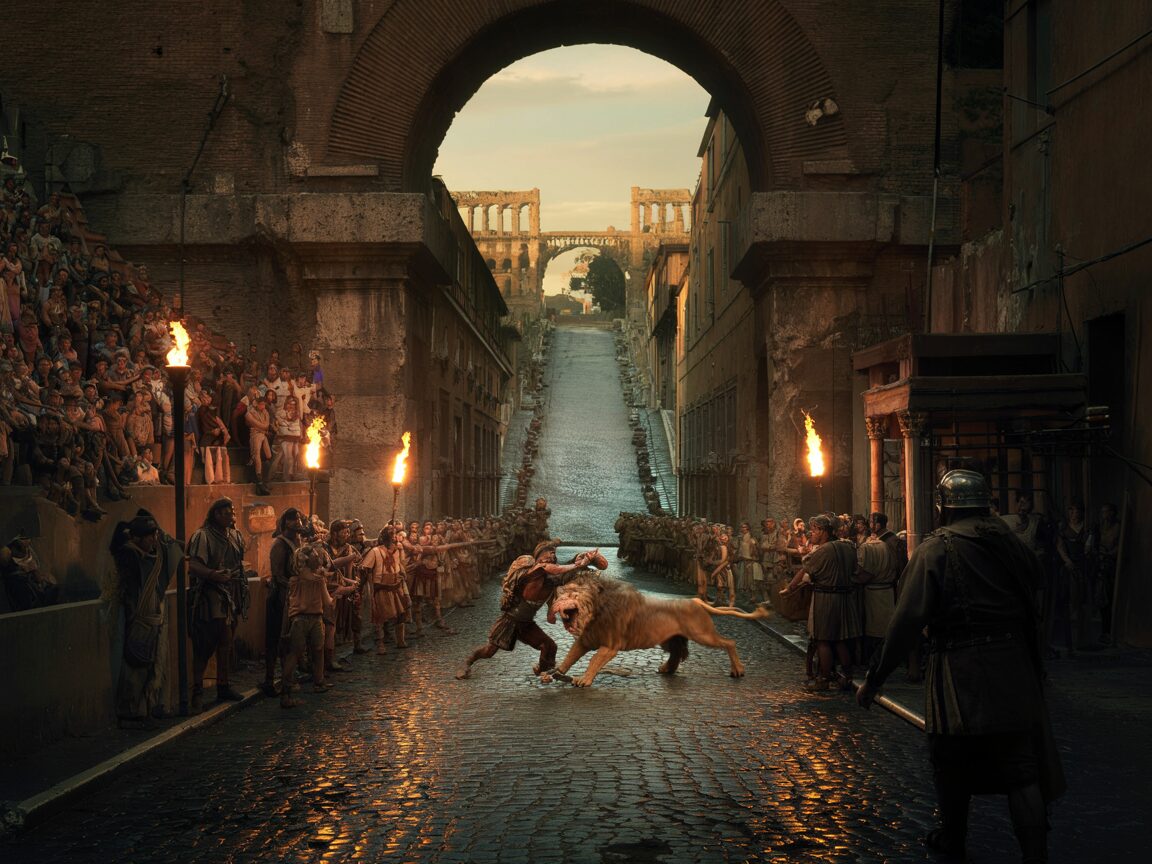
Public Executions, Gladiator Fights, and Crimes Against the State
Public executions in Imperial Rome served a dual purpose: punishment of offenders and a stark deterrent to potential criminals. These spectacles were often held in prominent locations like the Forum or the Colosseum, drawing large crowds. The visibility of such punishments reinforced state authority and societal norms by demonstrating the consequences of breaking the law.
- Purpose of public executions:
- Instill fear among the populace to reduce crime
- Display the power of Roman justice publicly
- Reinforce social order by targeting offenders visibly
Gladiator fights occasionally functioned as a method of execution for condemned criminals. Rather than a straightforward death sentence, these condemned individuals were sometimes forced to fight wild beasts or gladiators in arenas. This form of execution combined entertainment with punishment, emphasizing brutality and reinforcing the message that defiance against Rome carried deadly risks.
Crimes against the state or religious institutions attracted particularly severe punishments. Offenses such as treason, sedition, or sacrilege threatened societal stability and were met with harsh penalties including exile, confiscation of property, torture, or death. The Roman government treated these crimes as attacks on the very fabric of Roman identity and governance.
The severity and public nature of these punishments underscored Rome’s commitment to maintaining order through visible demonstrations of authority and control. This approach is detailed in various academic sources, such as those found in Brill’s comprehensive studies, which delve deeper into the socio-political implications of such punitive measures in ancient Rome.
Law Enforcement Across the Empire: The Military’s Role and Emperor’s Authority
The Roman military, a vital institution in maintaining law and order, was especially significant in the vast and often volatile provincial areas of the Empire. Unlike Rome, where specialized forces like the Vigiles handled everyday policing, distant provinces relied heavily on military units to enforce laws, suppress rebellions, and protect imperial interests. Soldiers acted as both warriors and enforcers, combining combat readiness with policing duties under the command of provincial governors.
The Role of Governors
Governors wielded significant power, often backed by military force, to oversee local courts and execute punishments. Their authority was an extension of the Emperor’s will, ensuring imperial control over diverse regions with varying customs and legal traditions.
The Absolute Authority of the Emperor
The Emperor’s authority in legal matters was absolute. As the ultimate lawgiver and judge, he could intervene directly in high-profile cases or grant clemency. His decrees shaped legislation throughout the Empire and resolved disputes that provincial officials could not handle independently. Legal reforms under emperors like Augustus and Hadrian standardized procedures and reinforced central control. This combination of military enforcement on the ground and imperial legal supremacy created a system capable of managing crime across a sprawling empire with complex social structures.
However, it’s essential to understand that this system was not merely about enforcing laws or maintaining order; it was also intertwined with various aspects of Roman society, including its economy which heavily relied on agriculture. For a deeper insight into how agriculture played a crucial role in Roman economic growth, you might want to explore more about this topic.
Moreover, historical figures like Scipio Africanus significantly influenced not just military strategies but also the socio-political landscape of Rome. His victories during the Second Punic War against Carthage established Rome’s dominance in the region. To learn more about how Scipio Africanus changed the course of history, you can delve into his life and achievements.
Overall, understanding the complexities of law enforcement during this period requires a broader perspective on the rise and fall of the Roman Empire, which encompasses its political, cultural, and societal transformations over a millennium.
Lastly, it’s worth noting that many legal principles established during the Roman Empire have had an enduring influence on modern law. The Corpus Juris Civilis, commissioned by Emperor Justinian I in the 6th century AD, serves as a comprehensive codification that preserved ancient Roman legal principles while adapting them to contemporary society’s needs. This significant achievement marked a turning point in the development of legal systems, particularly in Europe. To explore more about its impact on modern law, you can read about the enduring influence of Corpus Juris Civilis.
Conclusion
The study of Crime and Punishment on the Streets of Imperial Rome offers valuable insights into a society defined by its societal structure and elaborate mechanisms of control. Key takeaways include:
- Legal outcomes deeply influenced by social class distinctions
- Punishments designed to reinforce social order and deter dissent
- The Emperor’s authority central to maintaining imperial cohesion
- Law enforcement combining military force with specialized units like the Vigiles
Understanding these aspects helps decode how Rome balanced justice, power, and public order in one of history’s most complex urban environments.
FAQs (Frequently Asked Questions)
What were the most common crimes committed on the streets of Imperial Rome?
Common crimes in Imperial Rome included theft, assault, and various forms of public disorder, all occurring within a densely populated urban environment that posed significant challenges for law enforcement.
Who were the Vigiles and what role did they play in maintaining order in Imperial Rome?
The Vigiles were a specialized group responsible for policing the streets of Imperial Rome, acting as firefighters and night watchmen to maintain public order and enforce laws within the city.
How did social status affect punishments for crimes in Imperial Rome?
Punishments varied significantly based on social status; citizens often received more lenient treatment compared to slaves or non-citizens, who faced harsher penalties such as Poena cullei or Damnatio ad bestias for specific offenses.
What was the function of prisons in the Roman justice system?
Prisons primarily served as holding cells for accused persons awaiting trial rather than long-term incarceration facilities, reflecting the Roman justice system’s focus on swift legal proceedings.
How did public executions and gladiator fights serve as tools for crime deterrence in Imperial Rome?
Public executions and gladiator fights were employed as severe punishments and public spectacles designed to deter crime and reinforce societal stability by demonstrating the consequences of offenses against the state or religious institutions.
What role did the Roman military and Emperor’s authority play in law enforcement across the Empire?
The Roman military enforced law throughout provincial areas of the Empire, while the Emperor held ultimate legal authority, ensuring centralized control over legal matters and maintaining order across diverse regions.

